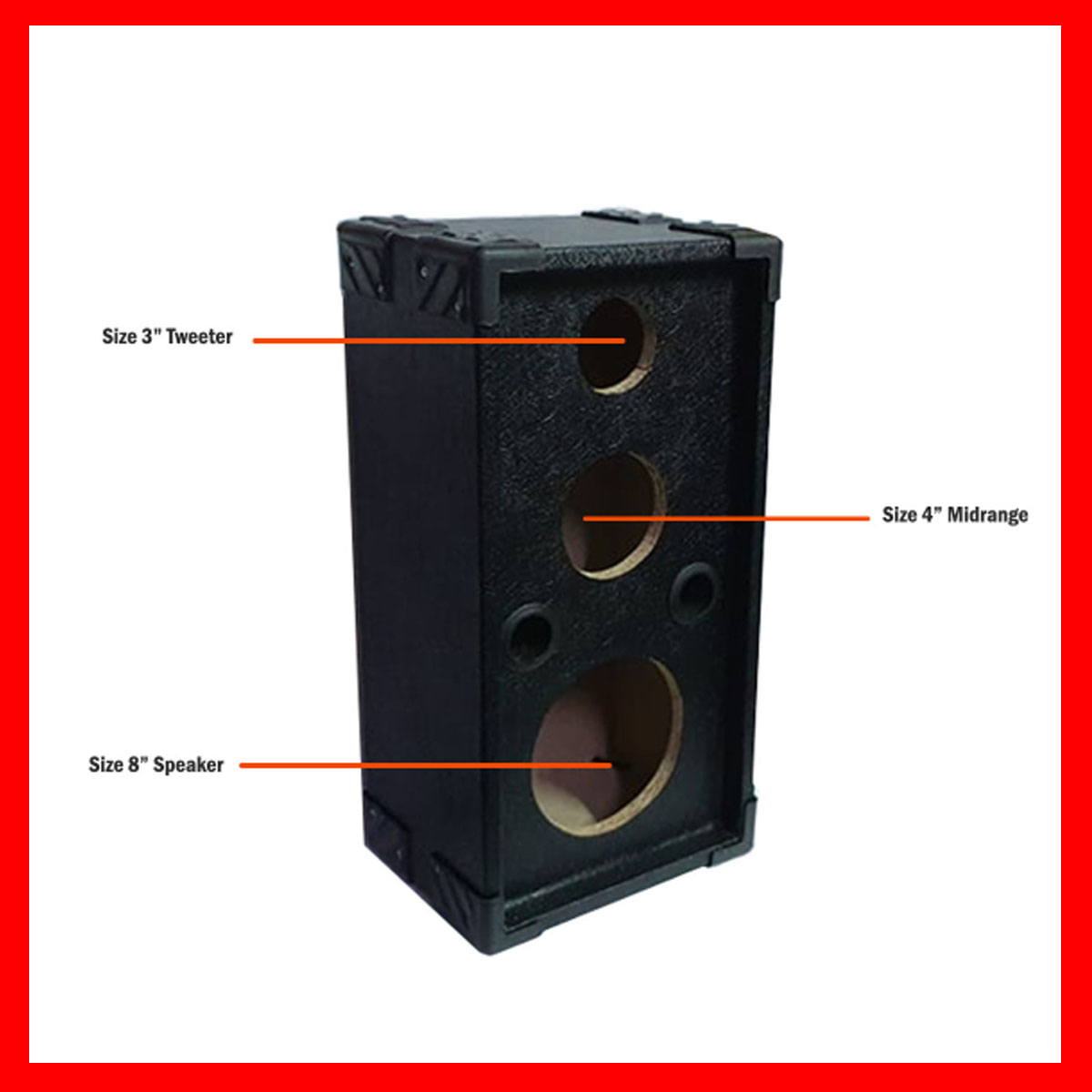

- #3 WAY SPEAKER ENCLOSURE DESIGN DRIVERS#
- #3 WAY SPEAKER ENCLOSURE DESIGN DRIVER#
- #3 WAY SPEAKER ENCLOSURE DESIGN PLUS#
medium-density fiberboard (MDF) backed with a layer of 3/4-in. Initially, I intended to build the cabinet from solid hardwood, but North Creek's plans recommend a combination of 3/4-in. That saves some work, but these still must be mounted in the cabinets and wired to the drivers.īuilding the cabinet was the most time-consuming part of the project, but it allowed me to customize the look of my speakers. The simple crossovers-one each for the woofer and tweeter in each speaker-come with the coils, capacitors and resistors hard-wired on perforated breadboards. The kit costs $369 for the pair and comes with everything except lumber and wood glue: drivers, crossovers, port tubes, acoustic stuffing and gaskets, the terminal cup for hooking up the wires from your amp and miscellaneous hardware. The kit costs $369 for the pair and comes with everything except lumber and wood glue Silk is a material favored by many audiophiles for delivering superb midrange- and high-frequency detail without sounding bright or hard, the way some metal domes can. woofer has a lightweight pressed-fiber cone coated with polypropylene, and the tweeter is a 1-in. cabinet measuring 12 1/2 x 7 1/2 x 9 5/8 in.

I selected North Creek's Okara II "Ikemo" kit, a ported design that delivers decent bass (down to about 60 Hz) from a small 0.25-cu.-ft. My own speaker-building ambitions were no grander than to have a little fun, learn a bit and come out with a pair of bookshelf speakers I could put in my home office. The benefit is that someone with know-how and good ears has gone through the time-consuming and costly process of "voicing" the speaker-engineering, auditioning and then re-engineering it until the desired sound is achieved.
#3 WAY SPEAKER ENCLOSURE DESIGN DRIVER#
This little firm is run by George Short, a speaker engineer whose kits use his own driver and crossover designs but require you to buy cabinets elsewhere, or build them using the provided detailed woodworking plans. For this project, I opted for one of these hybrid kits, from North Creek Music Systems in Old Forge, N.Y.
#3 WAY SPEAKER ENCLOSURE DESIGN PLUS#
If that's your leaning, Parts Express is a well-stocked and reliable source for speaker builders and a good place to start.īut if that's too hit-or-miss, you can buy a speaker kit that comes with all the components, plus either a preconstructed cabinet or drawings to build your own. Hardcore speaker hobbyists take delight in figuring all this out for themselves, designing and building the crossovers and enclosures from scratch to see what comes out.
#3 WAY SPEAKER ENCLOSURE DESIGN DRIVERS#
Every decision you make-from the combination of drivers and crossovers to the material you use to build the cabinet-influences the performance and character of your speakers. But coaxing rich and beautiful sound out of these elements requires a bit of harmonic alchemy. Crossovers act as an electrical filter to split the signal and direct the portions of the audio-frequency range to the drivers best equipped to handle them. The cone or dome drivers are transducers that transform the electrical signal into the physical movement of air (i.e., sound).

The key elements are the drivers, crossovers and the cabinet. At its core a loudspeaker is a surprisingly simple deviceĪt its core a loudspeaker is a surprisingly simple device.


 0 kommentar(er)
0 kommentar(er)
